Sharlyn J. Lauby's Blog, page 12
February 11, 2025
Organizations Need to Have a Position and Policy on Employee Activism
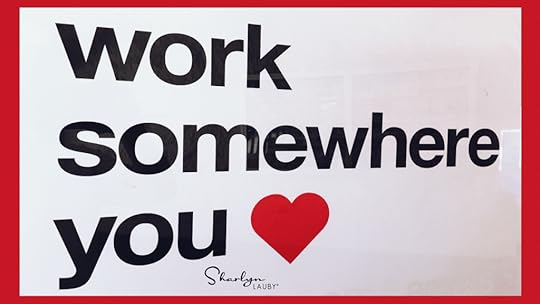
Estimated reading time: 4 minutes
The one thing we’ve learned over the past few weeks is that managing change will be essential for success in 2025. Laws, policies, procedures, etc. are being changed every day. These changes will have an impact on our personal and professional lives. Organizations and individuals might be okay with some of these changes. Others, maybe not.
The reason I’m bringing this up is because I listened to a webinar recently that might be helpful in thinking about our role as human resources professionals and helping organizations navigate change. The webinar was titled “Employee Activism and Its Impact as Laws and Politics Rapidly Evolve” and was hosted by Christopher Ward, Patrick McMahon, and Pauline Wizig from the firm of Foley & Lardner LLP.
The webinar reminded me of an article I shared recently about employees being organizational influencers. Activism is about creating change and employees might be looking for organizational support when it comes to making change happen. Just to be clear, I’m not talking about change inside the organization. Think of employee activism as change outside the organization. It could be related to social justice, climate change, or politics.
Right now, I know many organizations are trying to steer clear of taking sides politically or socially. One of my takeaways from the webinar was that as much as organizations might want to do that, sometimes it’s not always possible. And staying on the sidelines could be harmful to the organization. It reminds me of theories about power. If an employee perceives that you have power and you do nothing with it, that can hurt your credibility as much – if not more – than when you use your power and employees don’t like it.
During the webinar, the presenters emphasized how technology is playing a huge role in employee activism. Employees can use technology tools like social media to amplify their messages. Now, the answer to this isn’t to draft a policy that says, “nobody can talk to anyone about anything”. What might be better is for organizations to discuss how they want to address employee activism. The webinar mentioned a resource from Harvard Business Review that could be a good place to start.
In the article “A Leader’s Guide to Navigating Employee Activism”, the authors introduce six types of responses. I could see leadership using these to discuss what’s happening within their organization and how to address matters when they arise. The six types are:
Non-existent – As in leaders know nothing and do nothing.Suppression – Leaders squash the conversation, indicating certain topics are not up for discussion.Facadism – Leaders are all talk and no action. Defensive engagement – Organizations do what legal counsel tells them, and nothing more.Dialogic engagement – Organizations take steps to understand the issue and employee concerns.Stimulating activism – The organization publicly stands for a particular cause and supports employee activists.The HBR article goes into more detail about these six responses and is worth checking out. The takeaway for me in the article and the webinar was that organizations don’t have to respond the same way to everything. It’s okay to take a stand on some issues and not others. This doesn’t mean we don’t care. Just like in our personal lives, we don’t donate to everything. And that’s okay. Do what you can. And someone else will do what they can. Together, we’ll create change.
I do not anticipate employee activism going away. In fact, it could be amplified given the current environment. Organizations might want to consider taking a proactive approach to employee activism. This gives the organization a process for listening to employee feedback and responding in a consistent manner.
Image captured by Sharlyn Lauby while exploring the streets of Chicago, IL
The post Organizations Need to Have a Position and Policy on Employee Activism appeared first on hr bartender.
February 9, 2025
6 Things to Remember When You’re Starting a New Job

Estimated reading time: 4 minutes
I’ve noticed several of my LinkedIn connections are announcing a new job. Great for them! It’s wonderful when people can achieve their career goals.
It also means that you have to deal with being “new”. New company, new boss, new team members, new policies and procedures, etc. You get the point. We often talk about what organizations, managers, and buddies need to do when they are onboarding new employees … but what about the things that a new employee needs to do?
If you haven’t already left your current job / employer, think about your departure. Even when you’re totally frustrated and burned out with your current situation, you might want to leave on good terms. You’ve done good work. There are probably employees you enjoyed working with. You’ll need information about COBRA, 401(k), etc. I’m not saying lie about your experience, but there’s a way to provide insightful feedback during an exit interview without destroying relationships.
Research your new organization. You’ve probably done a certain amount of research during the interview process, but your perspective will be different now that you’re an employee. Check out the company website for the new job, especially the newsroom page where you can read announcements. Also do a general internet search and check out the news tab to see what others are saying about the organization.
Prepare your questions. As a HR professional, as much as I try to anticipate everyone’s questions in advance, sometimes, I miss the mark. So, get a notebook and start writing down the things you want to know. Keep in mind that you shouldn’t expect to get all your questions answered on the first day within the first few hours. But keep track of the answers you get and look for opportunities to ask more questions.
Focus on building relationships. This is obvious but let me say it anyway. You don’t know people and they don’t know you. Even if you have a buddy, there might be times when you will want to introduce yourself. Think about what you would say. Don’t get frustrated if you have to introduce yourself more than once in your new job. If you’re like me and have an unusual name, you might have to remind people how to pronounce your name. The flip side is also true … you’ll want to figure out how you’re going to remember people, their names, and what they do in the organization.
Get to know your new boss. Speaking of building relationships, one important relationship to focus on is the one with your manager. Start to understand how they like to communicate and when. Are they an early morning person, so that’s the best time to ask questions? Or do they appear to have more time after lunch to chat? Maybe they’re more of an email person. Understanding how to communicate with your boss will be valuable throughout your career.
Learn your job. I know this also goes without saying, but even when you’re doing the same thing in a new place, there can be subtle differences. For example, in HR, we regularly deal with dress code policies. But every organization has a different policy so there’s a learning curve. Remember, you’re not going to learn everything in a day. It could be helpful to keep a notebook of resources so when you don’t remember something, you know where to find answers.
These activities could also be helpful when you’re changing roles within the same company. If you’re moving to a new location, you might be working with a new team and a new boss.
Starting a new job or moving to a new company can be incredibly exciting. That’s great. The organization is putting plans in place to set you up for success through orientation and onboarding. Take time to think about the transition and how you want to position yourself for success.
Image captured by Sharlyn Lauby while exploring the streets of Las Vegas, NV
The post 6 Things to Remember When You’re Starting a New Job appeared first on hr bartender.
February 6, 2025
How to Create a Morning Routine

Estimated reading time: 4 minutes
During my human resources career, one thing I’ve become protective of is my morning routine. I’ve spent much of my career in 24/7/365 industries, so it was very likely that when I arrived at work, my schedule could be completely changed because of something happening while I wasn’t there. You get where I’m coming from. The only thing I could really control was my morning. So, it became very important.
Even now, as a consultant, my morning routine matters but for a different reason. I find that my morning routine helps me to feel better and be more productive. If you’re looking to create a morning routine for yourself or maybe just tweak your current routine, here are a few things to consider.
Determine how much time you have. The first thing to consider is how much time you have because that’s going to drive how much you can do. Creating a morning routine involves allocating time to do those things you want to do. So, be honest with yourself about how much time you’re willing to give.
Create a wake-up routine. Sleep is so important to our wellbeing. Sleep loss can impact our mood and increase stress. To me, a part of the process is falling asleep well and waking up the way I want. Even when we have to set an alarm, it’s always great to wake to sounds we enjoy.
Think about your caffeine. There are tons of jokes and memes about needing caffeine before we can talk to anyone. In all seriousness, we do need to understand the effects of caffeine and what’s best for us. I’m not here to dispense medical advice except to say that understanding what’s good for us can have an impact on our morning routine.
Have breakfast. There’s an old saying about breakfast being the most important meal of the day. And it’s true. Having a nutritious breakfast can positively impact our performance. As you’re creating your morning routine, think about where breakfast fits in … and what makes a good breakfast for you. I love having fruit for breakfast and I feel better when I do.
Decide how much news you need to consume. I will admit it … I’m a news junkie. That being said, there are times when I need to read a little less news and focus on other things. I’ve discovered that my local library offers a subscription to Creativebug, which offers art classes. They have some very short sessions with doodling prompts, etc. Takes less than 5 minutes and it keeps me from doomscrolling.
Know when you like to exercise. Speaking of alternatives to the news, another thing I’m incorporating into my morning routine is activity. I still have a Cubii under my desk and pedal every day. I’m also finding short (around 10 minutes) sessions on Apple Fitness to do some strength work.
Take care of yourself. Because my morning routine is designed to help me feel and perform better, I try to take a moment to do things like apply nail oil, use moisturizer, etc. I’m not really into big elaborate expensive skin care rituals, but I have a few things that I’ve built into my routine, and I feel they produce good results.
Try to fit in something fun. I know we’ve talked about many things to consider, but if you have time, try to add something fun to your routine. It could be listening to your favorite music during breakfast. Or playing a game. It’s amazing how adding just one fun thing can really have a positive impact on the day.
Realize there will be days when you can’t do it all. Last but certainly not least, we have to remember that every once in a while, we’re not going to be able to complete our morning routine. There are days when my morning routine becomes my afternoon routine or sometimes my evening routine. On those days, I just go with it, do what I can, and enjoy my full morning routine the next day.
Again, I’m not suggesting that everyone has to do all of these things. Or even half of these things. But if you’re looking for a way to improve your morning … examining your morning routine could make a difference.
Image captured by Sharlyn Lauby while exploring the streets of Orlando, FL
The post How to Create a Morning Routine appeared first on hr bartender.
February 4, 2025
Organizations: 5 Things Artificial Intelligence Says Will be Prominent in 2025
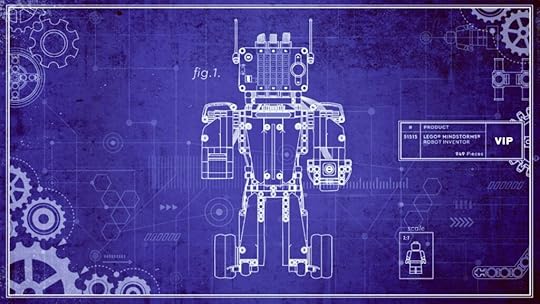
Estimated reading time: 3 minutes
I’ve been publishing a few articles recently about what to expect in 2025:
How to Prepare for HR Compliance in 2025
Managing Change is an Essential Skill
Update on Federal and State Labor Laws Taking Effect January 1, 2025
Employee Benefits: What to Expect in 2025
I thought it might be interesting to ask ChatGPT what organizations should expect in the upcoming year. In 2024, I asked ChatGPT what would be “in” and “out” and honestly, the predictions weren’t too far off. So, here are five things that ChatGPT told me would be prominent this year. Let me start by saying that I took artificial intelligence (AI) off the list – even though it was mentioned – because that just sounded a bit promotional. You know, AI says that AI will be “in” for 2025.
Sustainability and green initiativesRemote and hybrid work models Health, wellness, and mental health focus Emphasis on diversity and inclusionFocus on data privacy and cybersecurity enhancementsForgive me for being a bit cynical, but given what’s in the news, I’m not sure I’m seeing a high level of promise in what ChatGPT is telling me here. Granted, I would love it if organizations focused on these things. But it’s early in the year so there is plenty of time for AI to be right after all. We’ll see!
On the other hand, ChatGPT’s list of what will be “out” for organizations in 2025 is more in alignment with what we’re hearing in the news.
Traditional advertising channelsCash transactionsNon-digital customer serviceManual data entry and paper-based processesTraditional employee trainingAgain, it will be interesting to see how the year progresses and how the incoming administration has an impact on business operations.
I wanted to wrap up today’s article on a fun note, so I also asked ChatGPT what would be in / out from a pop culture perspective in the months ahead. IN: adult summer camps, big hair, dopamine-boosting hobbies, and gaming culture. OUT: sourdough baking, sanewashing, standalone mustaches, and bubble dresses. It will be interesting to watch these. I’m not sure how I feel about big hair and bubble dresses – ha.ha.
I still believe that activities like this – asking artificial intelligence for predictions – can be a great way to start getting comfortable with using it. AI isn’t going away. At some point, we won’t be able to avoid it. I believe that’s what is meant by non-digital customer service. Fewer people, more chatbots. So, get ready and continue to experiment with AI.
The post Organizations: 5 Things Artificial Intelligence Says Will be Prominent in 2025 appeared first on hr bartender.
February 2, 2025
How to Resolve Team Conflicts

Estimated reading time: 3 minutes
Over the past month or so, I’ve been sharing with you some predictions about what might happen with the incoming government administration. While we don’t know exactly what changes will be made, I think it’s safe to say that changes are coming. And when organizations make changes, that can often change how resources are allocated within the company.
Most organizations have already made their budgets for the year. During the budget process, departments pitch projects they would like to work on and what resources they need to be successful. If new or additional resources become available, there could be differing opinions about what to do with those resources. This often leads to internal conflicts.
The same is true with teams. Organizations might change or adjust the scope of a team’s work, and this means a reallocation of resources. Like the budgeting process, team members might have opinions about how those resources should be used and if there’s a lot of disagreement, it could result in team conflict. I wanted to share some resources today that organizations can use to help teams resolve their own conflicts.
Know the difference between team building and team development. Team building is focused on activities to clarify roles within teams. Team development is focused on providing individuals with the skills to be a good team member. Teams need both team building and development. It’s possible that the reason organizational teams struggle is because they haven’t been given the tools to work out conflicts on their own.
Understand team dynamics. When thinking about teams, it could be helpful to understand group dynamics. The Tuckman Model (forming, storming, norming, performing, adjourning) is a great way to look at the performance cycle of groups, what they experience, and how team leaders can help the group through conflict to achieve high performance.
Assign team members roles and responsibilities. Models like RACI (responsible, accountable, consult, inform) and MOCHA (manager, owner, consultant, helper, approver) can help teams assign responsibilities for tasks and keep individuals and teams accountable for results. Both models identify who will be ultimately accountable for a process as well as who to keep in the loop along the way. This can be helpful when groups have questions or challenges.
Teach team members problem solving and conflict management. One of the topics that every employee needs to know is how to solve problems and resolve conflicts. The Situation – Target – Proposal (STP) model can help teams identify the source of the problem or conflict and a path toward resolution. For example, if a group isn’t in agreement about the cause of a problem, they should reexamine the situation and facts for more information. This can help team members get on the same page.
I wanted to share these tools because often when teams face a difference of opinion, these tools can keep the differences from escalating into full-blown conflicts. Large scale team conflict is not good for the individuals or the organization. As a human resources professional, I’ve never enjoyed having to referee an internal disagreement or conflict. I think it’s safe to say that no one does. I will if I must … but it’s better when teams can come to a resolution on their own.
Team conflicts hurt working relationships and can impact organizational productivity. The answer is giving employees and team leaders the tools they need to handle conflicts when they arise.
Image captured by Sharlyn Lauby while exploring the Wynwood Art District in Miami, FL
The post How to Resolve Team Conflicts appeared first on hr bartender.
January 30, 2025
Job Offer Rescinded – Ask #HR Bartender

Estimated reading time: 2 minutes
I recently received a comment from a reader about the Work Opportunity Tax Credit (WOTC) and a rescinded job offer. It’s a long comment but worth a read.
I was unwilling to complete the WOTC online form for an employer that extended an offer to me. The application they used generated a generic date of birth (DOB) for me even though I was checking the box that states I’m not under the age 40 (and if you’re under the age of 40, a generic DOB is entered). I did return completed forms since I was never guided on what else to do due to the glitch in the system they use. I do fall into at least one category as I do receive SNAP/EBT benefits and was unemployed for 4 months prior to the acceptance of the position.
The evening prior to my first day, I received a text from HR not come in since my WOTC form had not been ‘cleared’. The drug screening and everything else has been approved and onboarding paperwork was scheduled. Can they legally not hire me after an offer letter and all other things I have done?
Those of us with no criminal record get passed up so companies that follow this WOTC policy and only hire those with sketchy pasts doesn’t allow the employer to get that hefty tax credit that can be as large as $9600 in many cases. The employer gets a huge payout and a subpar employee. Those of us with skills and no records who like to work get shoved aside. Same as hiring a person from another country and so on. Simple clarification as to why the U.S. is in the position it is in. Equal opportunity used to mean something. Now it is based on the dollar over your head and how the company will make money and pay lower wages and then file bankruptcy or whatever due to the business failing. Thank you.
First, I understand it’s frustrating to have a job offer rescinded. Especially the evening prior to your first day. I’m not able to address the reader’s comment about the job offer being rescinded because we don’t have enough information and I’m not a lawyer. That being said, I would like to share a couple of articles about the Work Opportunity Tax Credit (WOTC).
The Work Opportunity Tax Credit program has been around since 1996. A while back, I interviewed Bonita Richardson, senior business consultant with ADP’s Tax Credit Services division about the WOTC. Whether you’re an organization or an individual, this article provides the basics about the program and how it works.
I also found an article on the ADP website about the WOTC. It includes an FAQ asking about participation in the program. Here’s their answer: “The Work Opportunity Tax Credit is a voluntary program. As such, employers are not obligated to recruit WOTC-eligible applicants and job applicants don’t have to complete the WOTC eligibility questionnaire. Employers can still hire these individuals if they so choose but will not be able to claim the tax credit.”
In my experience, I’ve never been asked to extend a job offer to an unqualified candidate for a tax credit. My understanding of the WOTC is that it’s not about hiring unqualified people. It’s about making sure organizations don’t exclude qualified people because they’re background might be different.
Organizations are focused on hiring the most qualified candidates. Having the best employees helps the organization reach its goals. Unfortunately, sometimes organizations rescind job offers for a variety of reasons. Some of those reasons have nothing to do with the candidate and their qualifications.
Candidates who have their job offer rescinded have the right to be unhappy and frustrated. They made plans based on that job offer. And then it’s up to the candidate to figure out the best path forward for their professional career.
Image captured by Sharlyn Lauby while exploring the Wynwood Art District in Miami, FL
The post Job Offer Rescinded – Ask #HR Bartender appeared first on hr bartender.
January 28, 2025
Employees Are Organizational Influencers

Estimated reading time: 3 minutes
By now, we’ve all heard the term online influencer or social media influencer. It’s defined as “a person who is able to generate interest in something” by posting about it online. The reason I want to talk about influencers today is because LinkedIn recently published an article titled “25 Big Ideas that will change our world in 2025”. It’s an interesting read worth checking out.
Number three on this list is “corporate employees will emerge as the next wave of influencers”. Honestly, I must admit that this one might be a bit off the mark. Employees are not going to emerge as the next wave of influencers. Why? Because they already are organizational influencers. And the problem isn’t with employees. It’s with organizations that don’t realize their employees have that power and aren’t taking steps to cultivate it.
A great example is employee referrals. Yes, an employee referral bonus is nice. But no one is going to refer their friend, colleague, or family member to work with them for a terrible employer. Can you imagine referring someone only to have them come to you and say something like, “I can’t believe you told me to apply here. This place is a mess. And you made money from the referral.”? If organizations aren’t seeing referrals, they might want to find out why. The answer could be that their “employee influencers” aren’t willing to promote the company.
In all fairness, maybe organizations have always understood the value of employees promoting the organization but never thought of it in terms of being an influencer. Now that the term is out there, organizations should take some time to think about how they can help employees be better influencers for the company.
Build a culture component into onboarding. Organizations often tell employees about the company history during orientation but what about culture? This could be a great time to let employees know what the company’s culture is all about. And connect it to the company’s products and services. I’m still amazed at the number of organizations that do not offer an educational session to employees on what the company does – they just hope employees learn it on the job.
Teach employees how to use social media safely. Technology is very much a part of our personal and professional lives. We want our employees / influencers to embrace technology and use it safely. Offering training sessions on how to use technology responsibly helps the employee and the company. Employees can use their knowledge to share information about the company’s brand, products, and job opportunities. Oh, and when employees do this, other employees can share it to their networks.
Measure results. Recognize and reward behavior. Organizations that welcome employees using their influence should be able to see results. It could be more traffic to the company website. Or customers saying that they heard about a new product or service from an employee. Or employee referrals increasing. Then the organization needs to thank the employee influencers. This wasn’t a part of their job description. It’s not a mandate. They did it because they trust the company and like working there.
Don’t get me wrong. Encouraging employees to be organizational influencers doesn’t entirely replace the company’s marketing efforts. Or recruiting efforts. But it can have a positive impact. If the organization truly recognizes the value.
Image captured by Sharlyn Lauby while exploring the streets of Washington, DC
The post Employees Are Organizational Influencers appeared first on hr bartender.
January 26, 2025
The Real Value of Entry Level Jobs
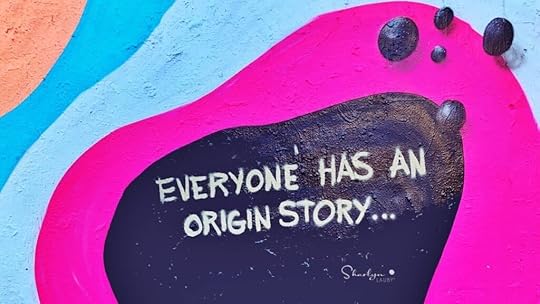
Estimated reading time: 3 minutes
I ran across an article on Fast Company recently titled “7 Ways HR Will Look Different in 2025”. It’s a good read that you might want to check out when you have the chance. Number seven on the list really jumped out for me. It’s that “certain entry-level roles will face extinction”. The explanation was that technology, automation, artificial intelligence, etc. is going to eliminate work typically performed by early career (or entry level) professionals.
I totally get it, and I agree with the article. We can already see signs of this. However, this trend does come with a couple of challenges.
First, one of the benefits with entry level jobs is that people learn how to be a good employee. My first jobs taught me about punctuality, responsibility, accountability, and much more. I also learned about being a part of a team and building relationships. The knowledge, skills, and abilities we learn in our first jobs helps us for the rest of our career.
And sometimes learning these things in our first jobs keeps us from messing things up in our later ones. You know what I mean. Those entry level jobs are sometimes roles we have for short periods of time, but they leave huge impressions. So later on, when we have that job that we really like and want to keep – maybe even want a promotion – what we learned early on helps us from making mistakes.
The question becomes if there are fewer entry level jobs, where and how do people learn those lessons?
The second point is that technology might replace some tasks, but it won’t replace everything. There are still going to be tasks that need to be completed and those will become the new entry level jobs. Makes sense. Except – what will the job look like?
I’ve always said that human resources is the architect of work. HR professionals should help the organization design jobs that people actually want to do. Because when people have a job that’s interesting and they can see how it helps the organization, that’s the beginning of employee engagement. And we all know that engagement improves productivity, which has a positive impact on the bottom-line.
When we talk about technology replacing tasks, I can’t help but wonder what tasks will be left and how can HR bring those tasks together to create interesting work? If organizations just mash a bunch of unrelated tasks together and call them a job, will people apply? And if they do take the job, how long will they stay? Not to mention, how will the organization train for the position and evaluate performance?
Again, I get it. I don’t see organizations slowing their adoption of automation and artificial intelligence. But that doesn’t mean they shouldn’t think about the impact this change will have on their workforce. Maybe organizations should consider creating more part-time opportunities or look for freelancers / consultants to handle some tasks.
People aren’t going to apply for unappealing jobs. Organizations that learn how to create interesting jobs will get the best candidates.
Image captured by Sharlyn Lauby at the 34th Street graffiti wall in Gainesville, FL
The post The Real Value of Entry Level Jobs appeared first on hr bartender.
January 23, 2025
Can Artificial Intelligence Help Organizations Identify Trends

Estimated reading time: 4 minutes
Around this time last year, I asked ChatGPT what would be “in” and “out” for 2024. It was a fun activity because people were posting their in / out lists for the year. After I published the article, I took the lists from ChatGPT and put them in my December 2024 folder because I wanted to revisit them and see how accurate the lists were.
I think this is an important part of the artificial intelligence (AI) learning process. If we ask AI a question like “What’s going to be in / out for the year?” then we need to go back and see how good the answers were. My expectation isn’t that AI will be perfect. But I also expect that it won’t be a complete fail either.
On the pop culture side, I think ChatGPT was right when it comes to inclusive fashion, dystopian and science fiction themes, and true crime podcasts being “in” for 2024. And I think it missed the mark saying superhero franchises will be “in” – while I love a good Marvel movie, there’s still a lot of conversation about superhero fatigue.
On the pop culture “out” list, I think there’s a trend away from print magazines, reboots and remakes, fast fashion, and reality TV. Not sure about sneaker culture – my sneaker collection would disagree.
Granted, my interpretation of how ChatGPT did on the pop culture side is totally subjective but actually I think it did very well. It makes me wonder what’s going to be in / out for 2025.
Now let’s look at the business side. On the “out” list, I would agree with ChatGPT that legacy software, organizational hierarchies and silos, and long commutes are definitely still considered “out”. But I’m not sure that I would agree that ignoring social media and overemphasis on short-term profits are out.
On the business “in” list, I think this is much more nuanced. I do believe there’s been an emphasis on sustainability, health and wellness, and cybersecurity investments. The question for me becomes was the emphasis “all talk” or did it translate into tangible results for most businesses? Same with remote learning and upskilling. I think employees want it, but I’m not sure it actually happened. I do believe ChatGPT got it right with eCommerce being “in” for 2024.
But the takeaways from this activity are less about was something in / out. It’s about using ChatGPT to talk about the future. How many organizations might ask artificial intelligence for information that they will use in their strategy meetings? How many business leaders will ask AI for insights and then say they came up with the idea on their commute into work? Call me cynical, but companies looking for their next big idea could be using AI to figure it out. That could be great … if AI is genuinely capable of good at helping organizations identify trends.
The good news is that AI is capable of identifying trends. That could be great for organizations. The challenge will be recognizing what trends AI is better at identifying – and at what level. It’s possible that AI can identify high level general business trends but not specific industry trends. Remember that AI is constantly learning, so as AI technology gets more information, will it become better at recognizing trends? Only time will tell.
For individuals and organizations, this means we need to continue to do our AI experiments. Ask questions and evaluate results. Keep track of what AI did a great job answering as well as those questions that the response was … well, not so great. It will help us know the best way to use this technology. Because artificial intelligence isn’t going away and we need to get better at using it.
Image captured by Sharlyn Lauby while exploring the streets of San Francisco, CA
The post Can Artificial Intelligence Help Organizations Identify Trends appeared first on hr bartender.
January 21, 2025
Encourage People Managers to Build a Peer Network

Estimated reading time: 5 minutes
We regularly talk about the importance of managers building good working relationships with their employees and even their manager. But maybe we don’t spend enough time talking about the importance of managers building relationships with their peers.
I learned this lesson years ago. I used to work for a company that liked to interview…they did it a lot. It was nothing for a candidate to have 5-6 interviews before they were extended an offer. As much as I tried to get them to convert some of those individual interviews into a panel or reduce the number of interviews in general, my efforts didn’t work.
Over time, I realized that the employees we hired arrived with a built-in peer network on day one. When they had questions that they really didn’t want to ask the human resources director or their manager, they had a network of colleagues who could help them. That network of colleagues were all those people who interviewed them.
So, something that I thought was unnecessary (like extra interviews), became an advantage. Oh sure, some people opted not to go through all the interviews, but the candidates who did were a good fit for us. And we were a good fit for them. We found that new hires having a peer network helped with onboarding and retention.
SHRM People Manager QualificationThe reason I’m bringing up the value of a peer network is because it was one of my big takeaways in the Society for Human Resource Management’s (SHRM) People Manager Qualification (PMQ) program. The PMQ program is a self-paced, virtual learning experience that helps managers gain the skills they need for success. I don’t want to give too much of the program away – there’s a short demo video on their website – but the PMQ is set in a modern workplace with characters that think and react very much like today’s people managers.
The program focuses on skills every people manager needs to succeed like effective communication, performance management, team and situational judgment. Examples include dealing with office gossip, being liked as a manager, delivering tough conversations, tacit approval, and getting comfortable with being uncomfortable. The PMQ also discusses diversity, inclusion, equity, and belonging topics.
Again, what I really liked about the PMQ was that the program encouraged managers to build a peer network. Let’s face it, becoming a new manager is tough. Especially if you were promoted from inside the organization. You must successfully transition from being one of the team to leading the team (and it’s not the same). Finding a group of peers who can support each other while having some fun along the way is essential.
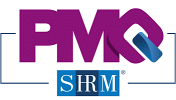
The other thing that I liked about the PMQ was that, in the context of building a peer network, HR could be a part of that network. This is another topic we don’t spend nearly enough time on. Managers should have good working relationships with HR. Going to talk with HR should be a two-way discussion, not a one-way set of rules and regulations. I thought the PMQ did a good job of showing the value of having a good working relationship with HR.
Managers Need Supportive Peer GroupsFrom a logistics perspective, the PMQ is divided into “seasons” where the managers deal with certain issues. Think of it like a TV show. An episode is typically less than 30 minutes. Managers could participate in an episode a day. It’s very doable.
In addition, organizations can engage with SHRM to provide facilitated debrief sessions after each season and use it as an opportunity for managers to start building their peer network. Think of these as group coaching sessions for managers where they can talk about their challenges (like in the PMQ) as well as build relationships with their peers. It amazing how many times managers don’t realize that they have the same challenges as someone else and that they can share stories and help each other.
Speaking of helping each other, SHRM’s PMQ recently launched a new module focused on wellbeing. People managers are going to encounter situations where they have to deal with an employee’s mental health. It’s unfair to think they won’t and more unfair not to give them tools to handle situations with the respect and care they deserve. The “Cultivate Your Wellness” episode provides managers with resources to help their teams.
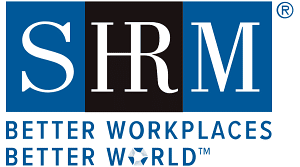
I could see the PMQ being valuable for organizations that aren’t able to bring groups of managers together for a traditional in-person management development program. Just because budgets are tight doesn’t mean training should stop. In fact, training becomes even more important.
There’s no rule that says managers can’t build positive working relationships with other managers. And that manager groups can’t learn from each other, coach and mentor each other, and be supportive of each other. If organizations want their people managers to be successful, giving them the tools and space to build their own support is essential.
Images courtesy of Society for Human Resource Management (SHRM)
The post Encourage People Managers to Build a Peer Network appeared first on hr bartender.
Sharlyn J. Lauby's Blog
- Sharlyn J. Lauby's profile
- 10 followers



